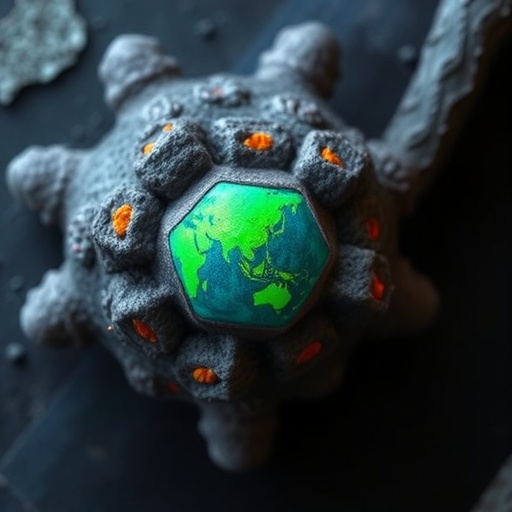In a groundbreaking advance at the intersection of oncology and artificial intelligence, researchers have unveiled a novel deep learning framework designed to predict microsatellite instability-high (MSI-H) tumors and their responsiveness to immune checkpoint inhibitors (ICIs) with unprecedented accuracy. This new model, named MSI-SEER, not only elevates the precision of MSI status assessment from routine histological slides but also introduces a pioneering method to quantify prediction uncertainty, fostering enhanced clinical trust and facilitating safer AI-human collaborations in cancer diagnostics and treatment planning.
Cancer remains one of the most formidable health challenges worldwide, affecting roughly one in three individuals during their lifetime. An essential biomarker guiding prognostic evaluation and therapeutic stratification is the tumor’s microsatellite status—whether microsatellites, repetitive DNA sequences prone to replication errors, are stable or unstable in the tumor genome. MSI-H tumors, characterized by deficient mismatch repair mechanisms leading to elevated mutation rates within these microsatellites, have been closely linked to improved patient outcomes and a distinct therapeutic sensitivity profile, particularly toward ICIs. These inhibitors unleash the immune system’s capacity to target and eliminate cancer cells, marking a paradigm shift in cancer treatment.
Despite the clinical significance of MSI status, routine testing methods, which often rely on labor-intensive molecular assays or immunohistochemistry, can be costly, time-consuming, and inaccessible in resource-limited settings. To overcome these hurdles, artificial intelligence (AI), especially deep learning, has emerged as a powerful tool to infer MSI status directly from hematoxylin and eosin (H&E)-stained whole-slide images, widely used in pathology. However, most existing AI models fall short in two critical aspects: they neglect the intrinsic uncertainty in model predictions and lack insight into the tumor microenvironment’s spatial heterogeneity influencing ICI responsiveness.
Addressing these critical gaps, a multinational collaborative team led by Prof. Jae-Ho Cheong from Yonsei University College of Medicine, Korea, and colleagues in the United States have engineered MSI-SEER—a deep Gaussian process-based Bayesian model that integrates weakly supervised learning strategies to analyze gigapixel-scale histopathological images. This Bayesian formulation enables the model to perform not only precise classification of MSI status in gastric and colorectal cancers but also to internally estimate its prediction uncertainty through Monte Carlo dropout techniques. The resulting predictive variance is distilled into a Bayesian Confidence Score (BCS), quantifying confidence for each diagnostic output and allowing the system to distinguish between high-certainty and ambiguous cases.
The integration of uncertainty modeling sets MSI-SEER apart by enabling the AI to essentially “know what it does not know.” This capability underpins a novel clinical workflow wherein predictions flagged with elevated uncertainty prompt an automatic secondary examination by expert pathologists, ensuring that ambiguous cases receive meticulous human review. Such an AI-human collaboration enhances diagnostic reliability, mitigates risks of misclassification, and optimizes resource allocation in pathology labs.
Extensive validation across diverse multinational cohorts comprising patients from different racial and ethnic backgrounds attested to MSI-SEER’s robust performance. The model consistently delivered state-of-the-art accuracy, outperforming previous convolutional neural network and vision transformer-based architectures by comprehensively integrating uncertainty quantification. Moreover, the approach underscores the critical value of Bayesian deep learning frameworks in clinical AI applications, where predictive certainty influences decision-making and patient safety.
Beyond MSI prediction, MSI-SEER innovatively incorporates tumor microenvironment characteristics by analyzing the stroma-to-tumor ratio at the tile level within whole-slide images. This granularity empowers the model to shed light on the spatial distribution of MSI-H regions and their interaction with stromal components, which directly impacts the tumor’s immune milieu and its responsiveness to ICIs. Through this method, MSI-SEER not only predicts immunotherapy outcomes but also provides pathologists with a nuanced map of tumor heterogeneity, which could guide personalized treatment strategies.
Prof. Cheong emphasizes the broader implications of their methodology, stating that MSI-SEER represents more than a single predictive tool; it exemplifies a scalable AI framework capable of fusing multimodal clinical data—ranging from histopathology to genomics—to develop precision oncology models that are both clinically interpretable and actionable. This transdisciplinary approach leverages decades of oncological expertise, advanced computational modeling, and rigorous clinical validation to push the frontiers of personalized cancer medicine.
The study published in the peer-reviewed journal npj Digital Medicine underscores the growing synergy between cutting-edge AI technologies and translational cancer research. By facilitating cost-efficient, accessible, and reliable MSI testing, MSI-SEER holds promise for widespread clinical integration, potentially democratizing molecular diagnostics in oncology and expediting timely immunotherapy interventions, thus improving patient outcomes on a global scale.
Looking ahead, the research team envisions applications of MSI-SEER beyond diagnostic prediction, including its deployment in prospective cohort surveillance and phase IV clinical trials to monitor therapeutic responses in real-world settings. This vision aligns with the long-term goal of constructing adaptive, self-refining AI systems grounded in transparent uncertainty metrics, which continuously learn from clinical feedback and evolve to meet emerging challenges in cancer care.
In conclusion, MSI-SEER’s innovative combination of Bayesian deep learning techniques, uncertainty quantification, and integrated microenvironmental analysis represents a landmark achievement in the quest for clinically trustworthy AI in oncology. By enhancing the detection of MSI status and immunotherapy responsiveness from conventional histology, this approach augments the precision oncology toolkit, fosters safer AI-human collaboration, and paves the way for more personalized, effective cancer treatments.
Subject of Research: Cells
Article Title: Deep Gaussian process with uncertainty estimation for microsatellite instability and immunotherapy response prediction from histology
News Publication Date: 19-May-2025
Web References:
https://doi.org/10.1038/s41746-025-01580-8
References:
Cheong J-H, Kang J, et al. Deep Gaussian process with uncertainty estimation for microsatellite instability and immunotherapy response prediction from histology. npj Digital Medicine. 2025; DOI: 10.1038/s41746-025-01580-8.
Image Credits:
Credit: Jae-Ho Cheong from Yonsei University College of Medicine
Keywords:
Neoplasms, Cancer, Colorectal cancer, Deep learning, Machine learning, Artificial intelligence, Immunotherapy, Biomarkers, Medical diagnosis, Cancer research, Medical treatments




